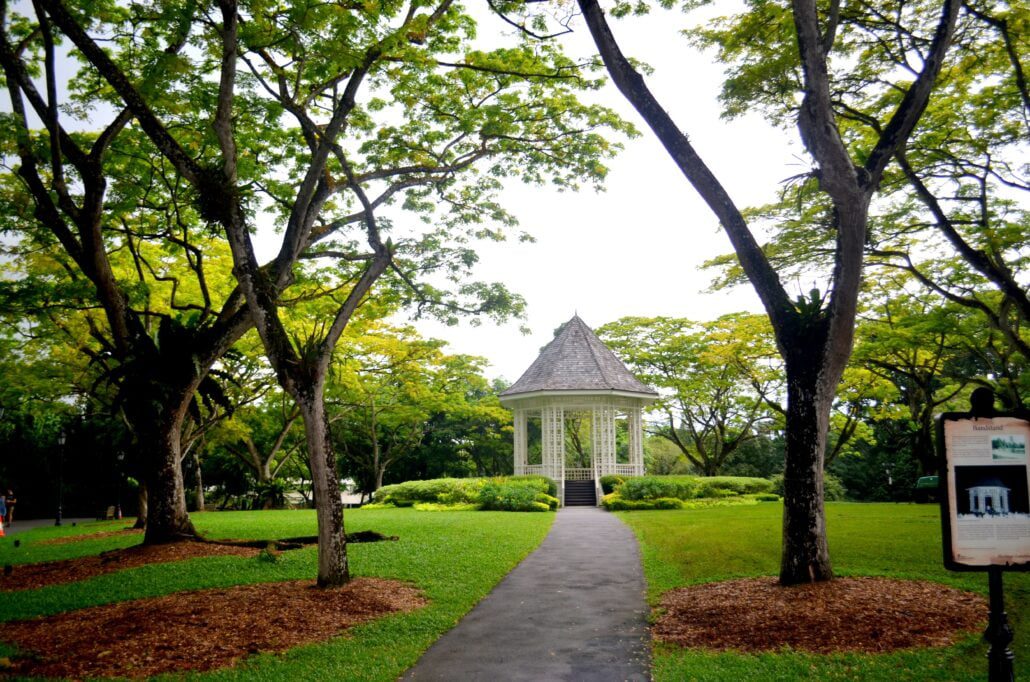The Singapore Botanic Gardens provides a green space in the heart of one of Asia’s most densely populated cities to which people can escape from high-rise buildings and square boxes where they spend their working lives. A botanical wonderland, UNESCO World Heritage Site, and 160 years of downs heritage! Nature lover, history enthusiast, or just want to escape from the hustle and bustle of city life – you can find it all at Singapore Botanic Gardens.
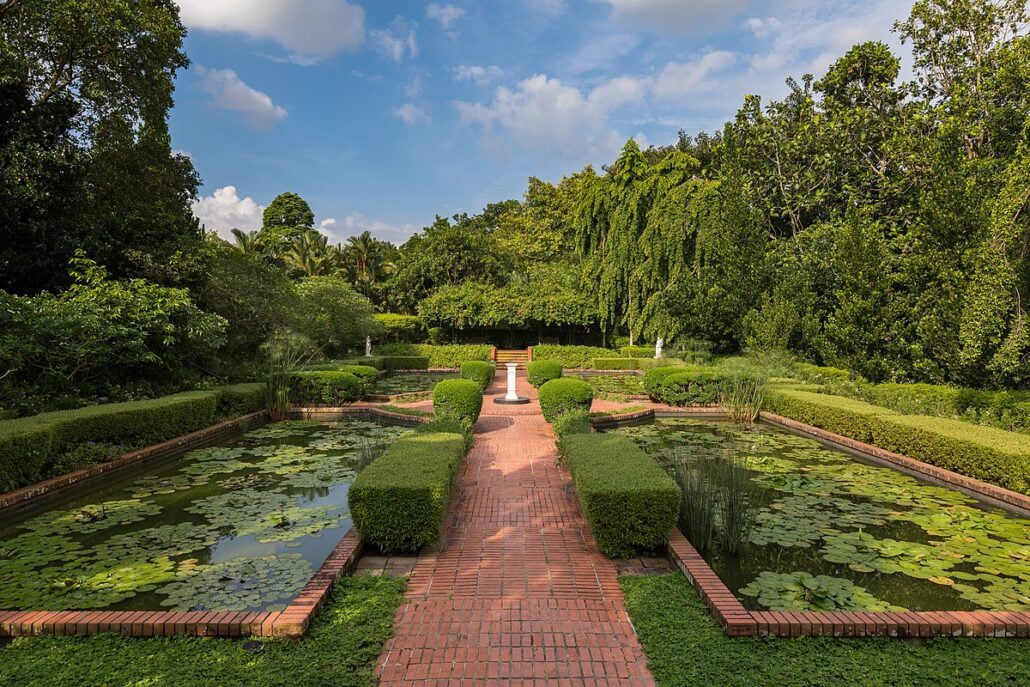
Source: Wikipedia
A Glimpse into the History of Singapore Botanic Gardens
Singapore Botanic Gardens (1859): Founded in 1859 by an agri-horticultural society during the British colonial period. The gardens were first established for shared public enjoyment but developed into a research and conservation centre. The gardens have also been central to the transformation of Singapore into a Garden City under late Prime Minister Lee Kuan Yew.
One of the great achievements that can be associated with a garden is its role in research to grow and propagate rubber, which would, over time, become one of the most significant crop types common across Southeast Asia. This work was also trailblazing and led to a lot of innovation in the region: The gardens helped implement top energy management practices, saving money on water, chemicals, and natural gas costs while setting up new economic opportunities that you will learn more about below. The Singapore Botanic Gardens today remains a garden city gem and also serves as a centre for research, education, conservation and recreation to the millions of local and international visitors.
A Journey Through Nature
Established in 1859, the Singapore Botanic Gardens stretches across coverage of an area of over 82 hectares and is organized into several different zones, as they provide unique experiences. Let us take a detailed view of the main attractions within the gardens
-
The National Orchid Garden
Visiting Singapore Botanic Gardens is never complete without a visit to the National Orchid Garden. This little riot of colour and scent is home to more than 1,000 species, along with some 2,000 hybrids. National Orchid Garden —Landscaped with precision and orchids representing the seasons in themed areas, “Orchid In Cool House,” designed to resemble a rising high-altitude environment focusing on rare exotic orchids, is one fine example.
-
The Rainforest
Surrounded by the garden is a 6-hectare fragment of primary Rainforest. Do you know that? The majestic, ancient tree still stands, and this natural relic of Singapore is much older than the gardens themselves. Giant trees and thick underbrush will envelop you, while overhead, an eclectic mix of flora and fauna thrives amid the dense foliage. Recommended for nature lovers, the Rainforest Trail gives a taste of what Singapore used to look like before all that urbanization.
-
The Evolution Garden
Visit the Evolution Garden to take a trip back in time through plant history on Earth. No other garden offers the opportunity to travel through time from the days when ferns and mosses dominated our Earth up to modern times as this gardening jewel does. b) Evolution GardenThe beautifully designed Evolution Garden is as informative, with rock formations and water features surrounded by amazing plant displays that depict the evolution story.
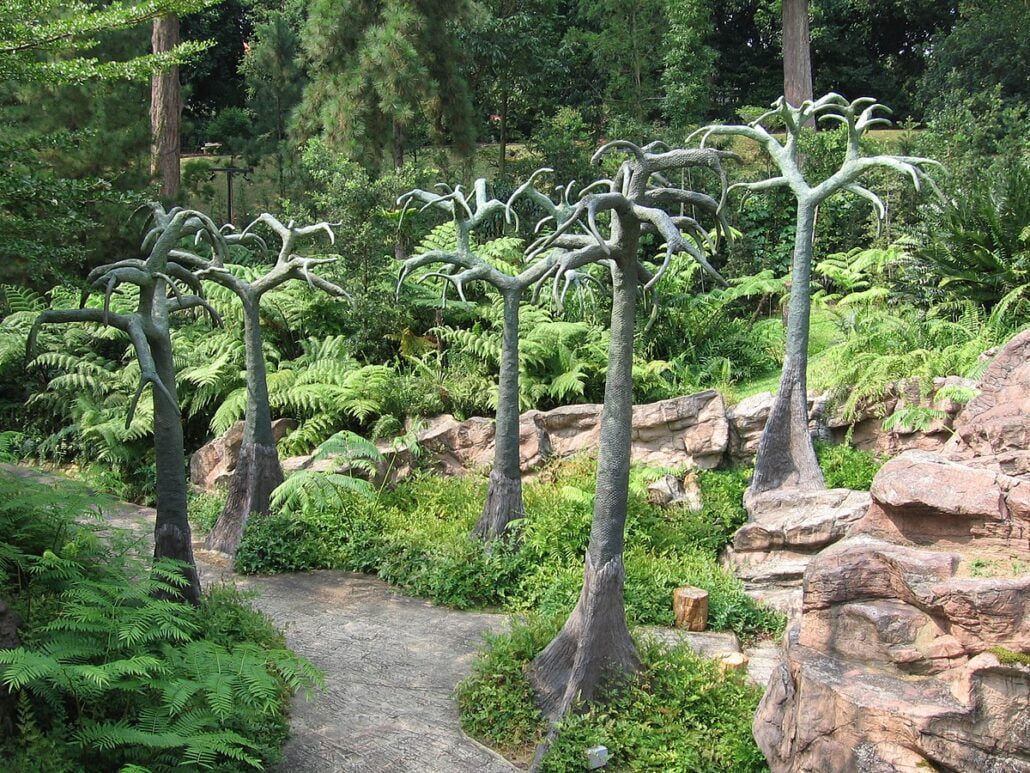
Source: Wikipedia
-
The Healing Garden
The Healing Garden is a peaceful garden featuring medicinal plants. The garden takes up 2.5hg and is divided into sections that are associated with the body parts used for gardening by healing itself through the plant scheme, as shown in the painting below (Mithoefer et al.). The Healing Garden showcases plants that cross the spectrum from herbs rooted in traditional medicine to a variety of modern therapeutic applications and is an examination of one aspect of human interaction with nature. The sounds of quiet thought and study.
-
The Ginger Garden
1 Ginger Garden: A tropical paradise next to the entrance of The Singapore Botanic Gardens (Same admission: Free). The garden focuses on the ginger family, featuring more than 250 species of plants from this one group alone, including culinary gingers like turmeric and cardamom. Admire the serene waterfalls, beautiful ponds and splendid sculptures of this wonderfully landscaped garden that is perfect for photography shots. Be sure to catch a glimpse of the Giant Amazon Water Lily in the water lily pond, an incredible botanical wonder (Photo).
-
The Botany Centre and Tanglin Gate
The Tanglin Gate: The oldest entrance to the Singapore Botanic Gardens is also an access point for visitors, leading them towards the sprawling greenery of lush trees, tropical foliage, and cheerful recreational space — just steps away from charming inns. The Heritage Museum and Library of Botany & Horticulture are located here. Learn the history and growth of the gardens at exhibits housed in The Heritage Museum that features pioneers instrumental in building its past. The library is a huge resource of botanical information, holding more than 30.000 books, journals, and rare manuscripts.
-
The Swan Lake
Swan Lake is one of the scenic places at Singapore Botanic Gardens. This peaceful water features a couple of beautiful mute swans, gifted to the park by Amsterdam. It is a beautiful piece of carving, and it also grows in the surrounding green space, surrounded by large stone statues such as the “A flight of swans” sign (flight) Eng Siak Loy Site Info Not only is the park ideal for picnics and photography but also to appreciate being with nature.
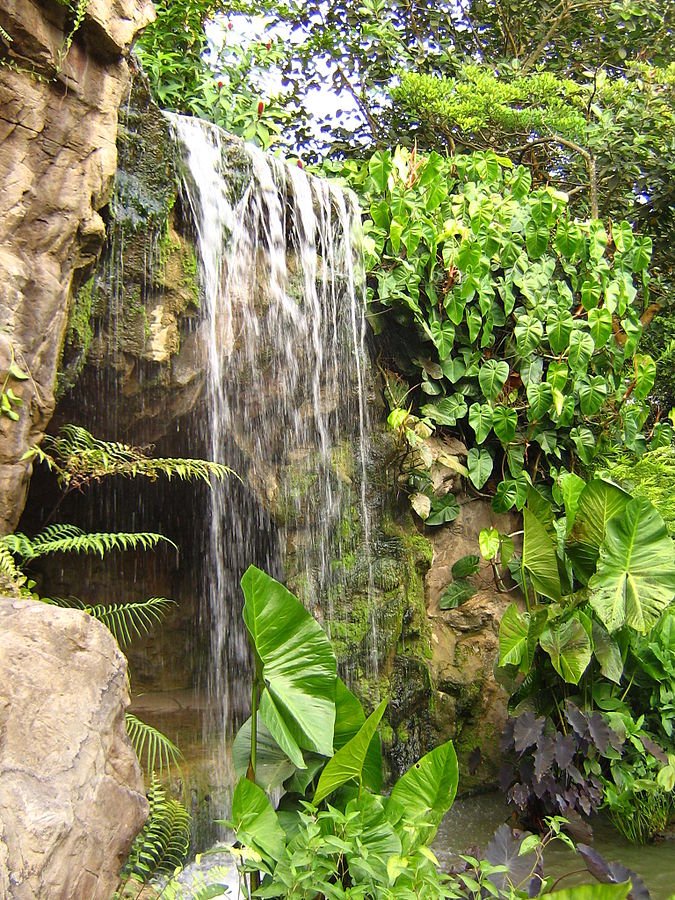
Source: Wikipedia
-
Jacob Ballas Children’s Garden
The Jacob Ballas Children’s Garden is a perfect spot for young explorers to learn about nature through play. With interactive displays, the farm garden allows you to explore a treehouse and water-playing areas. It is a place for children to climb, splash, and dig while learning about plants, animals, and the environment. The Children’s Garden also features a range of educational programs and workshops, making it ideal for family visits.
-
The Eco-Garden and Eco-Lake
Eco-Garden and Eco-Lake (Support keeping our environment clean) The Eco-Garden demonstrates sustainable gardening with low-water and minimal-maintenance plants. Eco-Lake, on the other hand, is home to various animals, such as fish that have been stocked with a series of birds, primarily including herons and turtles. The lake is also involved in a water conservation program to demonstrate how natural ecosystems can coexist with the urban setting.
-
Symphony Lake and Palm Valley
Palm Valley is an expansive open space dotted with towering palm trees and anchored by Symphony Lake. The Shaw Foundation Symphony Stage here is famous for its free outdoor concerts held throughout the year. With live music in the background from over at our lakeside stage, Palm Valley is a great spot for picnics and lounging on the grass. It is a favourite of families and couples due to its tranquil atmosphere.
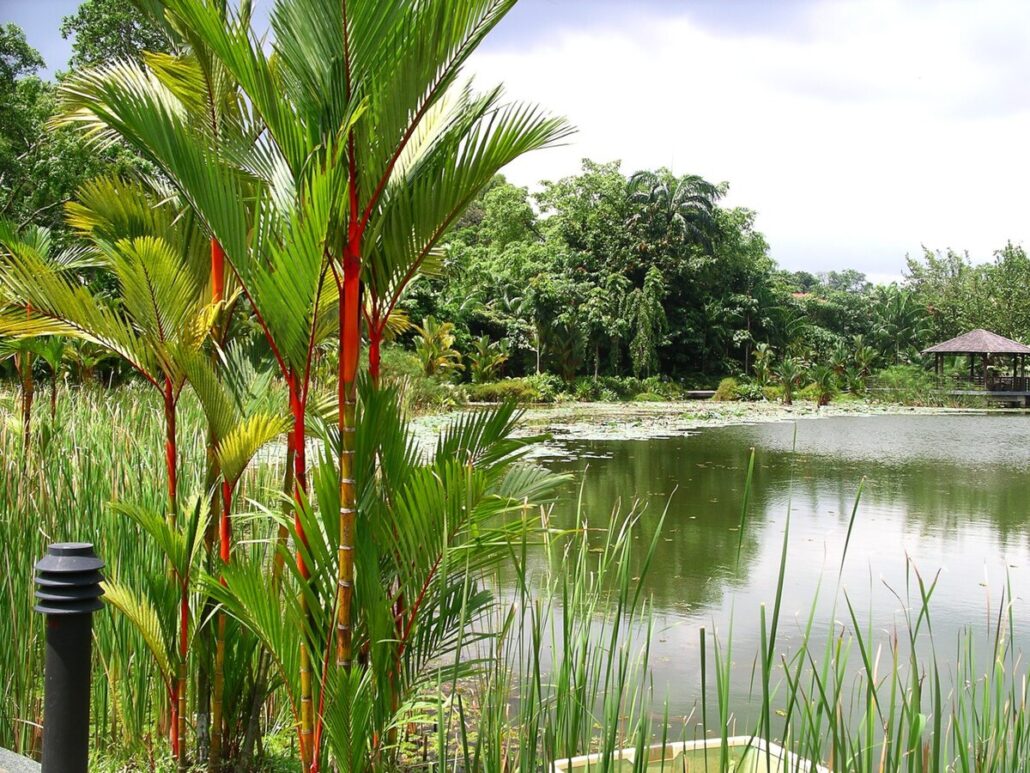
Source: Wikipedia
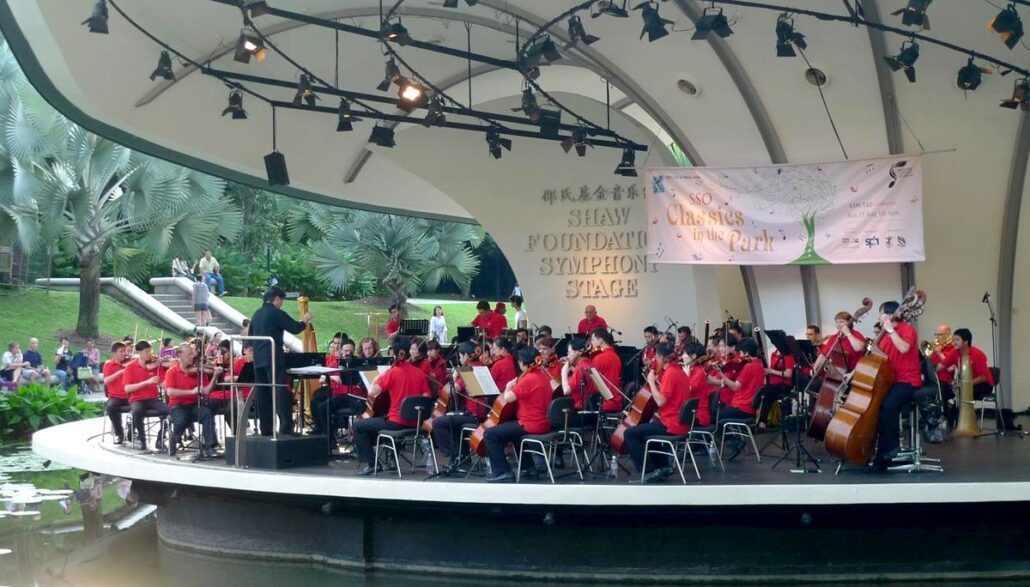
Source: Wikipedia
-
The Fragrant Garden
Living up to its name, the Fragrant Garden is a riot of sensations. A garden for plants that produce fragrant flowers and leaves. It provides a beautiful way to walk and enjoy the brain of jasmine, ylang-ylang, and frangipani. The best time of day to visit the Fragrant Garden is in the morning and late afternoon when perfumes are at their peak.
-
The Bonsai Garden
The Bonsai Garden is a hidden corner of the Singapore Botanic Gardens. This quiet corner serves as a haven for bonsai trees which have been tended over many years. The garden is a serene escape to silently take in the work and dedication it takes to grow these small trees. It’s a place to ponder and observe the beauty of nature on its smallest scales.
-
The Sun Garden
Sun Garden — A special collection of arid-adapted plants. Among the plants are a rich collection of cactus and succulents that include a wealth of unusual, rare species. It has been created to showcase the ability of these plants to water saving and adapt well to tough climates. The Sun Garden is well worth a visit for those interested in botany and horticulture, with its unique landscape accented by the diversity of plants on display.

Source: Wikipedia
Sustainable Practices at the Singapore Botanic Gardens
Going Green @ Singapore Botanic Gardens Through a variety of efforts, the gardens are dedicated to saving resources and preserving our environment:
- Water Conservation:- The gardens conserve water by collecting rainwater through a series of ponds and streams that reduce the dependency on irrigation.
- Energy Efficiency: The gardens feature solar panels and energy-efficient lighting to save on electricity.
- Waste Management: Separated waste products and converted them into organic fertilizers through the process of composting or recycling programs to save waste.
- Biodiversity Conservation: Gardens participate in conservation efforts; some cultivate threatened plant varieties, and others address habitats of local fauna.
Visiting the Singapore Botanic Gardens: Practical Information
When you visit the Singapore Botanic Gardens, this is what you should look into:
-
Opening Hours
Open: 5 am -12 am daily. The operating hours for the National Orchid Garden are from 8:30 AM – 7 PM ( last entry at 6 PM).
-
Admission Fees
The Singapore Botanic Gardens is an open-space reserve, and admission is free for all, but there will be a charge of INR 130/- per person to enter the National Orchid Garden. Here are the cost of the tickets :
- Adults: SGD 5
- Senior Citizens 60 years and above: SGD 1.00
- Students: SGD 1
- Child (Under 12): Free
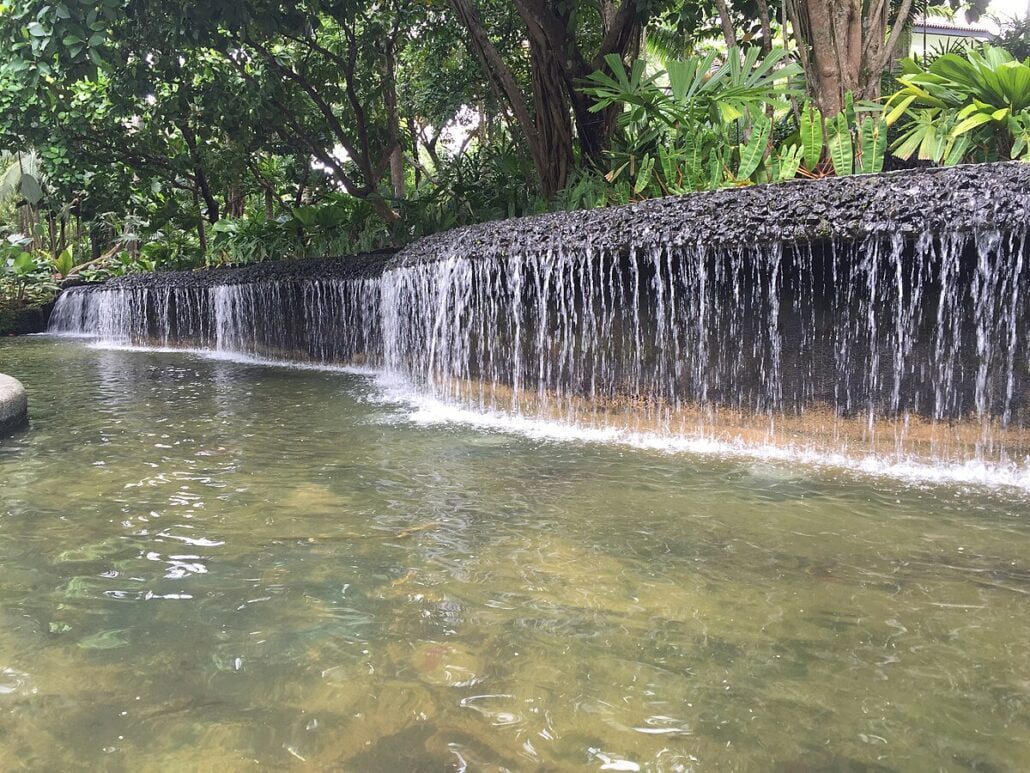
Source: Wikipedia
-
Getting There
Locate and Reach the Singapore Botanic Gardens
- MRT: Access to the gardens via MRT can be made from the Botanic Gardens (Circle Line/ Downtown Line) Mrt station at Bukit Timah Gate.
- Bus: Many bus services stop at the various entrances to the gardens
- Taxi/Car: Parking is located at the Tyersall Gate entrance and Nassim Gate entrance.
-
Tips for Visitors
- Wear comfortable shoes: the gardens are large, and you will walk a lot
- Bring water: Take Water Drink plenty of water, particularly on warm days
- Observe Weather Forecast: As they say, the gardens are best enjoyed at your leisure on a bright sunny day.
- Respect the wildlife: DO NOT FEED or HARM, and remember to STAY OFF grasses as they are probably food sources for animals.
- Take your time: you have plenty to see – so don’t hurry up. Take pleasure in the positive vibes of the gardens.
Conclusion
But it is not just a leafy place in the concrete-dense city; instead, a museum bringing alive various and fluctuating ecosystems living harmoniously — an example of Singapore’s promise to environmental sustainability. With the Singapore Botanic Gardens listed as a visitor favourite and one of the UNESCO World Heritage Sites in 2015, it is more than just a walk to remember, but rather an expedition into mother nature’s moulding history onto culture for locals alike. Spanning from the colourful blooms of the National Orchid Garden to tranquil trails within the Rainforest, each little nook and corner in Singapore Botanic Gardens gives you a different storybook ending!

